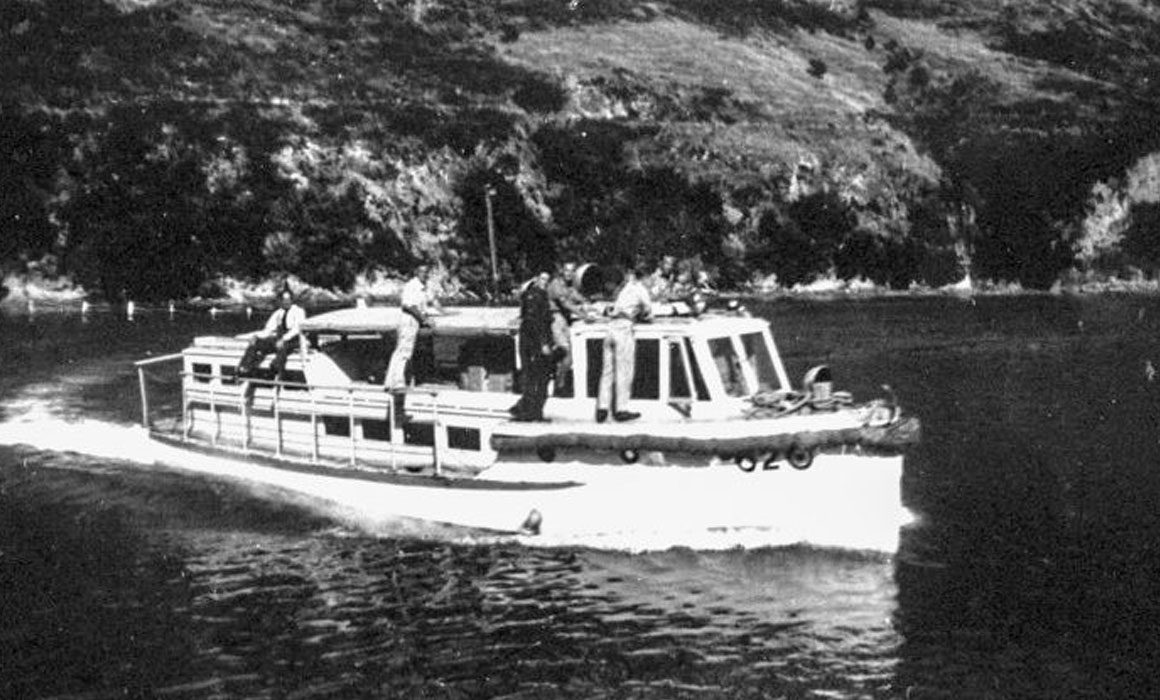

In February’s issue I chose four major launches built in Auckland for the 1919-1920 season. This month introduces another couple built in subsequent months.
The rate of launch building had long since outstripped the building of keel yachts. Part of the reason was that Auckland and the other New Zealand yachting centres had a large supply of keel yachts already, the result of the boom in ‘rater’ building in the 1890s and the rivalry between the Logan and the Bailey families of Auckland boatbuilders.
But a major ingredient was the ever-increasing reliability, power and safety of the marine engine which, coupled with a well-built hull, enabled Aucklanders to take full advantage of their harbour and the magnificent cruising grounds on their doorstep in much the same way that they were enjoying their motorcars.
PHYLLIS M/WAINUNU
Fred Mann was a very fine boatbuilder whose yard was his house at 85 John Street, Ponsonby. Fred’s principal job was with the timber firm Cashmore Bros at its mill in Cox’s Creek where he was a genius with the horse teams, as well as being the resident boatbuilder.
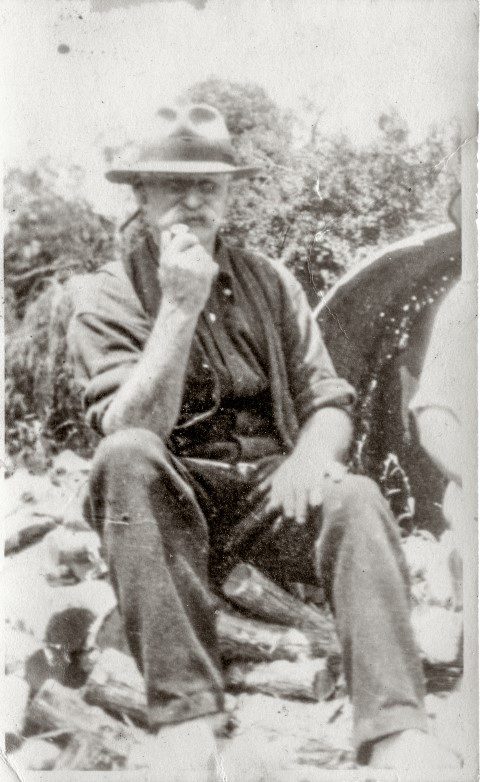
Fred had already established a good reputation as a boatbuilder by 1919 with two 20ft mullet boats – both named Mistletoe (1904 and 1914) – which he raced effectively, the auxiliary keel yacht Colonist (1911) for the Cashmores and the launches Gwen (1910), Gwen C (1912) and Roma G (1914).
In January 1920 Cashmore Bros’ mill was completely destroyed by fire. When the mill was relocated to Newmarket Fred carried on with firm but kept a private boatbuilding job on the go at John Street until his retirement to Kawau in the late 1930s. Prominent craft he later built included the launch Korama, the M Class 18-footer Maratea in 1927, and Lincoln Wood’s E Class keeler Memory in 1930.
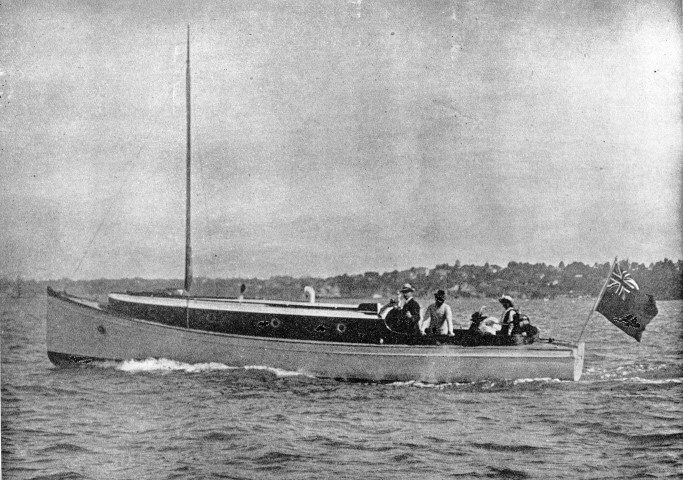
At the end of WW1 Fred decided to build himself a launch along the lines of the handsome pre-war 35-footer Roma G that he had built for Frank Goodacre of West End Road. This was Phyllis M, a 36ft tuck-stern launch with the generous beam of 10ft 6ins and a two-cylinder Auckland-built Twigg engine.
Probably because Roma G had been so successful, Phyllis M followed her form with a hull with sheer and a D-front cabin top even though, by 1914, the raised foredeck and break in the sheer had become so stylish, while the old form was no longer in fashion except for working boats. She looked at least nine years out of date in 1919.
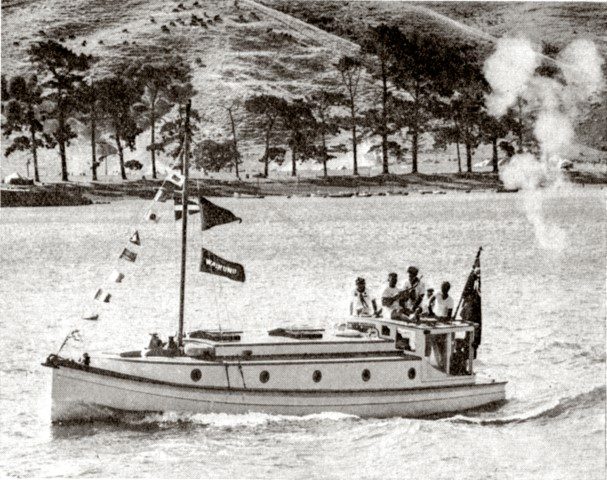
Fred launched her in December 1919. He had strong connections with the Tauranga Yacht & Motor Boat Club founded in 1920 and did a lot to foster the Tauranga Club’s 7-footer (later the P Class). He used Phyllis M and R.C. Renner’s Grace Darling (formerly Roma G) to bring loads of Tauranga 7-footers up to Auckland to race and show their paces.
After Fred Mann died in 1945 Phyllis M passed to prominent yachting official Clive Power. Before he went overseas in WWII, Clive had owned the 22ft mullet boats Otira and Hetty. After the war he briefly owned the big Stewart Island-built ketch Te Waipounamu.

Clive’s new wife Grace renamed Phyllis M Wainunu after the village in Fiji where she had spent her childhood. Clive installed a three-cylinder Lister diesel, one of the few power plants readily available at the time.
He was always heavily involved with Royal Akarana Yacht Club, the Coastguard and the Sea Scouts. During the Powers’ many years of ownership, their Wainunu was a familiar sight at yachting events on the Waitemata. She survives today in somewhat altered form, but reverted to Phyllis M.
IRIHAPETI/NOMAD/ARAWA/REHUTAI
This launch is typical of the puzzle to subsequent owners (and anoraks like me) that is created by launch owners who change the names of their craft, in defiance of sailors’ tradition that it is bad luck.
This boat started life as a project by George Elley. She was to be a handsome 36ft flushdecker with a dodger aft. During construction Percy Aldred persuaded Elley to partwith her, had construction completed (possibly by Collings & Bell) and a 60hp Ferro engine installed. Aldred named the launch Irihapeti after his wife Elizabeth (Irihapeti = Elizabeth in Maori) and had her launched in December 1919.
After a couple of seasons, Aldred sold Irihapeti to H. F. Butler of Remuera and went on to own the major launches Regina, later renamed Mary M and Maiebe and then Aumoe. Butler had land interests on Browns Island. In 1923 he changed her name to Nomad.
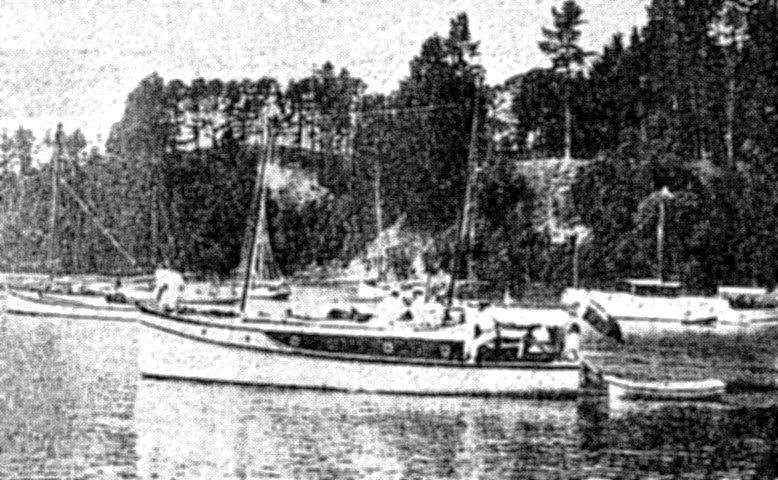
By 1931 Edwin Nops of Waiheke owned her as he sold her that year to W.E. Fullerton of Remuera. In the winter of 1935 Fullerton passed her on to Stan Parker, part-exchanging her for Parker’s powerful Hall-Scott-engined Eros which Fullerton then on-sold to John Gresham of Tauranga.
Parker commissioned Lidgards to lengthen her to 42ft overall and extensively rebuild her into “one of the most comfortable craft of her size on the harbour.” Her petrol engine was replaced with a 65/90 Deutz diesel with a petrol starting engine.
Stan renamed her Arawa. In 1938 Percy Vos gave her another overhaul including fitting a steamer-type funnel for ventilation. But Stan Parker was not to enjoy her for long. In 1939 the war came and in 1942 the RNZAF took Arawa over as W62. Stan’s son Ross, then only 17, personally delivered the boat to Hobsonville.
She went to Lauthala Bay in Fiji for general duties at the RNZAF flying boat base. After the war, the Parkers were told that Arawa had been lost or sunk in Fiji and would not be coming back to New Zealand. Stan ordered the magnificent 53-footer Rakanoa from Shipbuilders Ltd instead.

In fact, she did come back to New Zealand in 1945 and, after a massive rebuild in which Alan Orams was involved, she was used to take injured airmen on excursions at the Air Force’s Convalescent Depot at Curious Cove.
After 1945, as Arawa, she went through several private hands. In 1953 she was owned by R.M. Davidson and was one of the patrol craft which greeted the Gothic arriving in Auckland for the Royal Tour.
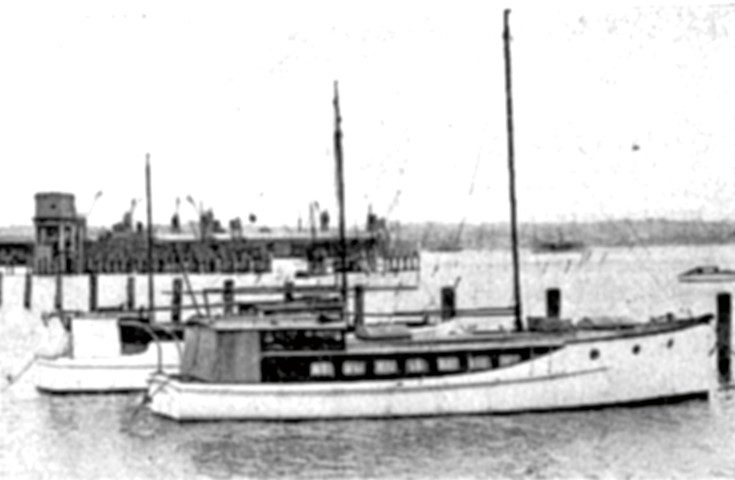
In the 1970s she was rebuilt into a bridgedecker configuration by Shipbuilders Ltd and renamed Rehutai. As Rehutai she was recently for sale in Auckland, described as “Lanes 1949”… and who can blame the poor owner?

By November 1919 there was considerable excitement in the Auckland press about the season’s crop of major launches. The Auckland Star of 4th November 1919 reported on five of the bigger boats under construction that month.
In the April issue I’ll deal with the remaining major 1919 launches, Gladys II, Romance II, Islay, Marguerite, Mollie and Luana, and wind up this 1919-1920 launches profile. Their history is so impressive.
AUCKLAND STAR, 4TH NOVEMBER, 1919
“Great interest is being taken by launch owners and boating men generally in the fine new boats now building. Not only will they be larger than any of our present fleet, but they will have considerably more power and several new features, including ‘midship cockpit and controls, while their ample beam will not appear excessive owing to the rest of the design being well balanced. They should be good sea boats, and be able to make a trip on the coast in almost any weather without undue discomfort and in average weather will be very comfortable, their good beam allowing the crew room to stretch their legs. Messrs Court’s [Gladys II], Holloway’s [Atatu] and Colebrook’s [Mollie] boats will be out-and-out cruisers, with a fair turn of speed up to about 11 knots, but the boats building for Messrs Boucher [Luana] and Harrison [Marguerite], with their maximum of 140 horsepower, are what is termed “express cruisers” in the States. The speed of these two can only be surmised as they are not in any way racing boats, but strongly-built, well-fitted craft…”




